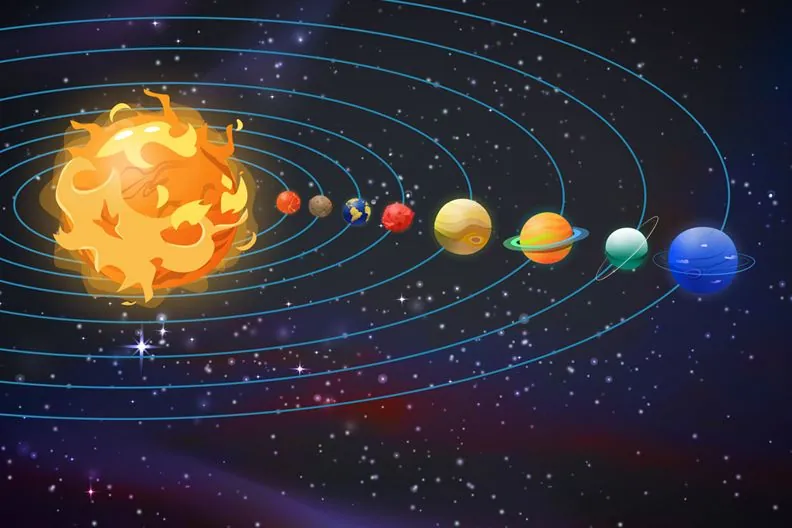“NASA has discovered a very young planet that may have lifeScientists have discovered an exoplanet LHS 1140 b, located 48 light years from Earth, which may have liquid water and an atmosphere. The planet is located in the “Goldilocks zone” and has a mass six times greater than Earth.”, — write on: unn.ua
Details
Observations have confirmed that a nearby planet may have an ocean of liquid water and even a nitrogen-rich atmosphere like Earth.
Lead author Charles Cadier of the University of Montreal said, “Of all the temperate exoplanets currently known, LHS 1140 b may be our best bet to one day indirectly confirm the presence of liquid water on the surface of an alien world outside our solar system.”
While we don’t know exactly what alien life would look like, scientists are pretty sure it would need liquid water to survive. The exoplanet LHS 1140 b is located 48 light years from Earth in the constellation of China. This means that our nearest neighbor planet exists in the “Goldilocks zone” of its star – a region where water can exist as a liquid,
This exoplanet is about six times the mass of Earth and orbits a small red dwarf star about one-fifth the size of our Sun at a distance cool enough to potentially form water.
A recent analysis showed that the exoplanet was significantly less massive than an object of its size should be. This left researchers with two options: either LHS 1140 b was a “mini-Neptune” composed mostly of liquefied or frozen gas, or it was a “Mega-Earth” covered in liquid or frozen water.
The exoplanet LHS 1140 b is in its star’s habitable zone, where liquid water can exist. Its large mass also gives it a high enough exit velocity to gather a thick atmosphere, as shown in this planet diagram
To determine that, the researchers combined data from JWST and other space telescopes, such as Hubble and Spitzer, to make the first “spectroscopic” analysis of LHS 1140 b. Because certain molecules block different wavelengths of light, they measured the frequencies of the light passing through past the planet, we can learn what chemicals might be present.
Their analysis suggests that LHS 1140 b is most likely a “water world” or “snowball” with a rocky core, rather than a gaseous mini-Neptune. Even more exciting, initial analysis suggests that the exoplanet may even have an Earth-like atmosphere. This would give it a much greater ability to retain heat from its star and make it more likely that it could have a stable climate – all important factors for life to exist.
Dr. Ryan McDonald, an astronomer at the University of Michigan who worked on the paper, said: “This is the first time we’ve seen a hint of an atmosphere on a rocky or ice-rich habitable zone exoplanet.”
Although they caution that additional observations from JWST are needed, the atmosphere may be rich in nitrogen, which makes up 78 percent of Earth’s atmosphere.
Dr Macdonald adds: “LHS 1140 b is one of the best small exoplanets in the habitable zone capable of supporting a thick atmosphere, and we might just find evidence of air on this world.”
Similar to the Moon’s orbit around Earth, LHS 1140 b has a synchronous orbit, meaning one side is always turned away from the star.
Although researchers believe that the exoplanet is most likely a frozen “snowball,” this means that there could be liquid water on the side heated by the star.
Dr. Ryan McDonald, an astronomer at the University of Michigan who worked on the paper, said: “This is the first time we’ve seen a hint of an atmosphere on a rocky or ice-rich exoplanet in the habitable zone.”
Although they caution that additional observations from JWST are needed, the atmosphere may be rich in nitrogen, which makes up 78 percent of Earth’s atmosphere.
Dr. McDonald adds: “LHS 1140 b is one of the best small exoplanets in the habitable zone that can support a thick atmosphere, and we might just find evidence of air on this world.”
Similar to the Moon’s orbit around Earth, LHS 1140 b has a synchronous orbit, meaning one side is always turned away from the star.
Although researchers believe that the exoplanet is most likely a frozen “snowball,” this means that there could be liquid water on the side heated by the star.
Humanity is moving in the wrong direction: scientists have published research on the critical violation of planetary boundariesSeptember 13 2023, 22:57 • 1720844 views
